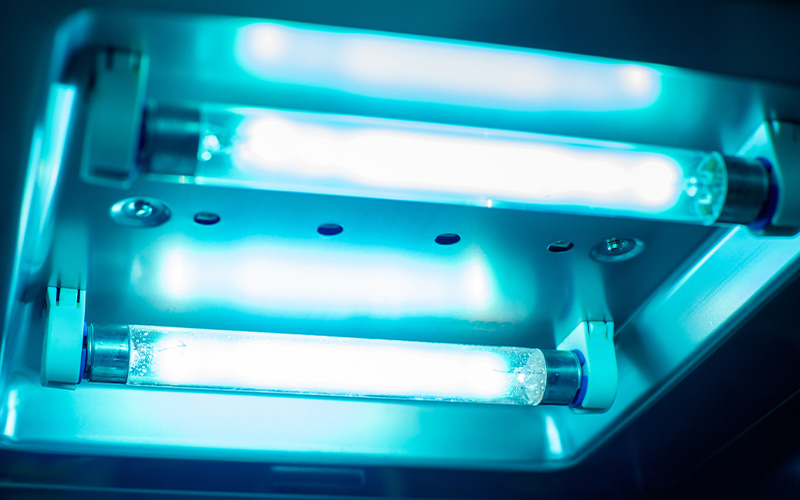Burnet is leading a research consortium collaborating with the Victorian Government to undertake a ground-breaking clinical trial to assess the effectiveness of upper room germicidal ultraviolet light (UR-GUV) in reducing the rates of COVID-19 and other airborne viruses in residential aged care facilities.
Outbreaks of COVID-19 and other respiratory infections in aged care facilitates are associated with serious illness, hospitalisation and death, as well as illness, isolation and absenteeism for staff.
The ‘Effectiveness of ultraviolet Light in an Upper room Configuration In Decreasing Airborne transmission of SARS-CoV-2 and influenza in Residential aged-care’ (ELUCIDAR) study is, to date, the world’s largest study of its type to assess the effectiveness of UV light as an indoor air quality intervention.
The technology works by shining ultraviolet light across the ceiling space to create a zone of disinfection at the top of the room. Air circulation in the room will bring airborne pathogens into the disinfection zone, just below the ceiling, where the ultraviolet light can inactivate them to prevent them from causing further infections.
The UV lights are carefully placed to ensure minimal exposure to occupants, allowing people to safely spend time in the room while the lights are on.
UR-GUV is an ‘old’ technology that has been used for decades to prevent tuberculosis in hospitals in high-burden settings. In laboratory studies, GUV light has been shown to be successful at inactivating bacteria and viruses, preventing them from being able to invade human cells.
Burnet Chief Health Officer for COVID and Health Emergencies Associate Professor Suman Majumdar is the co-principal investigator for the trial and said it could pave the way for changes to how public indoor spaces were managed.
“We commend the Victorian government on investing in solutions to improve indoor air quality – this is a huge step forward,” he said.
“The COVID-19 pandemic has had, and continues to have, a significant impact in high-risk settings where people gather, particularly in places like residential aged care facilities. This trial offers the potential to find sustainable solutions that don’t require significant behaviour change, to prevent COVID-19 and other respiratory illnesses and enhance preparedness for future airborne pathogen threats and pandemics.”
Partnering in the initiative is Distinguished Professor Lidia Morawska, from the International Laboratory for Air Quality and Health at Queensland University of Technology, who said it was an advancement in our approach to indoor air quality.
“The COVID-19 pandemic has heralded a paradigm shift in our acceptance of airborne transmission of viruses and the need to fast-track interventions to address this,” she said.
“We know from existing laboratory studies and our initial research that this technology is safe, well accepted and has enormous potential in reducing the transmission of airborne pathogens and viruses.”
“Evaluating how effective air quality interventions are on virus transmission is scientifically complex and a very large study like this is needed,” she said.
Also involved in the study is Melbourne University Professor and head of mechanical engineering, Jason Monty, who said the study could drive innovation in public building design.
“UV light is potentially one of those rare simple solutions to a complex problem,” he said.
“Technologies like UV light work seamlessly in the background, without interfering with day-to-day activities. They are inexpensive and easy to maintain, making them sensible long-term solutions.”
“If the technology is successful, it could be rolled out more widely to a variety of public settings.”
The research consortium includes Burnet Institute, the University of Melbourne, Monash University and Queensland University of Technology.

